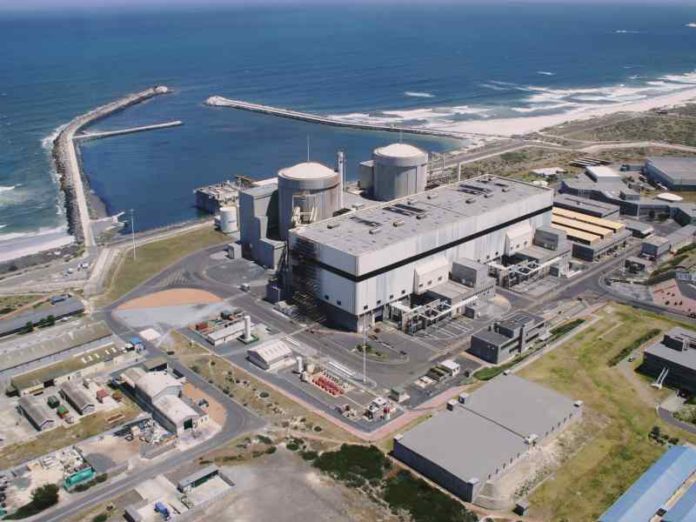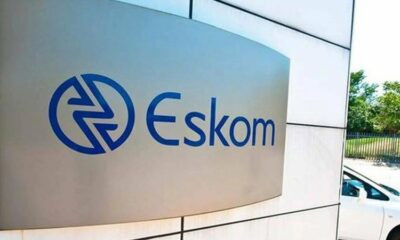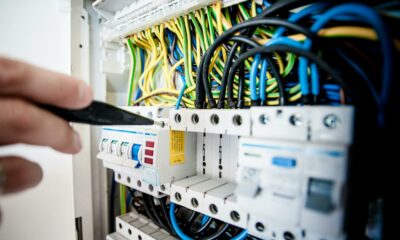Business
South Africa’s Nuclear Energy Future: Risks, Readiness, and the Road Ahead

With power instability and climate commitments reshaping the energy landscape, South Africa may be on the cusp of a nuclear revival, one that blends legacy infrastructure, international collaboration, and cutting-edge modular technology.
The Koeberg Legacy and a Safe Track Record
South Africa’s nuclear journey began in the mid-1980s with the commissioning of Koeberg Nuclear Power Station. For nearly 40 years, Koeberg has quietly supplied up to 6% of the country’s electricity, primarily to the Western Cape, without a single major safety incident—aside from a maintenance-related bolt mishap two decades ago.
That reliability has kept nuclear energy firmly in the conversation as Eskom and government leaders seek long-term solutions to persistent power cuts, decommissioned coal plants, and environmental targets.
A History of Stop-Starts
South Africa has made several attempts to expand its nuclear capacity. In 2008, Eskom shelved an ambitious expansion due to cost concerns. The next push came under President Jacob Zuma with plans to procure 9.6 GW of nuclear capacity outlined in the 2010 Integrated Resource Plan (IRP).
Despite extensive groundwork, the effort collapsed under legal challenges, mostly due to lack of transparency and failure to consult Parliament—a sobering reminder that political will must be matched by proper governance.
Lessons from the PBMR Project
Perhaps the most ambitious and uniquely South African nuclear project was the Pebble Bed Modular Reactor (PBMR) initiative. Born in the early 2000s, the PBMR aimed to develop a small, inherently safe, gas-cooled nuclear reactor.
It had real promise: scalable design, homegrown expertise from North-West University, and potential for industrial heat applications (which interested companies like Sasol). But unclear direction, shifting leadership, and budget overruns led to its eventual mothballing.
Today, however, Small Modular Reactors (SMRs) like the PBMR are experiencing a global resurgence.
Why SMRs Could Be South Africa’s Future
Modern SMRs offer significant advantages over traditional nuclear plants:
-
Lower upfront costs
-
Faster build times
-
Modularity and scalability
-
Reduced land and safety footprint
-
Easier integration into existing infrastructure
Globally, countries with limited transmission capacity, like Kenya and Ghana, are turning to SMRs. In the U.S., Bill Gates-backed TerraPower is building a 300 MW SMR on a former coal plant site in Wyoming—a model South Africa could replicate.
Here at home, as coal-fired stations near decommissioning, SMRs offer a rare opportunity to preserve jobs, reuse existing sites, and support climate targets under the Paris Agreement.
The Prerequisites for a Nuclear Comeback
Despite promising developments, any serious nuclear rollout will require groundwork in four key areas:
1. Skills and Education
South Africa still has nuclear engineers trained during the PBMR era, many of whom are willing to return. North-West University remains the only local institution offering advanced degrees in nuclear engineering. Further investment in skills training, welding, millwrighting, and safety certification is vital.
2. Industrial Readiness
While South Africa has strong engineering capabilities, nuclear demands precision, certification, and international standards compliance. Partnering with global nuclear firms could help bridge the readiness gap.
3. Robust Regulation
The National Nuclear Regulator (NNR) is already aligned with IAEA protocols and capable of issuing licenses. It ensures compliance with safety and security conventions, including the Additional Protocol and Nuclear Material Protection Convention.
4. Financing Models
Nuclear builds are capital-intensive. However, with the World Bank and ECB lifting financing restrictions on nuclear (recognising it as a low-carbon energy source), blended finance models are now possible. The Department of Mineral Resources and Energy (DMRE) has explored options, but must balance ambition with fiscal responsibility.
A Strategic National Opportunity
Nuclear energy, particularly SMRs, presents a strategic opportunity to:
-
Strengthen energy security
-
Revive industrial hubs
-
Create skilled jobs
-
Meet environmental targets
If managed transparently, collaboratively, and with firm public support, nuclear could become a cornerstone of South Africa’s energy future, not just an afterthought.
South Africa’s nuclear potential is real and within reach. From Koeberg’s reliability to the promise of SMRs, the foundation exists. But the future of nuclear energy depends on bold leadership, technocratic competence, and a clear vision rooted in public trust.
Now more than ever, amid Eskom’s struggles and growing climate pressure, it’s time to turn that potential into power, literally.
{Source: IOL}
Follow Joburg ETC on Facebook, Twitter , TikTok and Instagram
For more News in Johannesburg, visit joburgetc.com



























